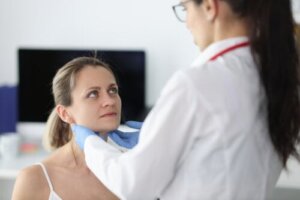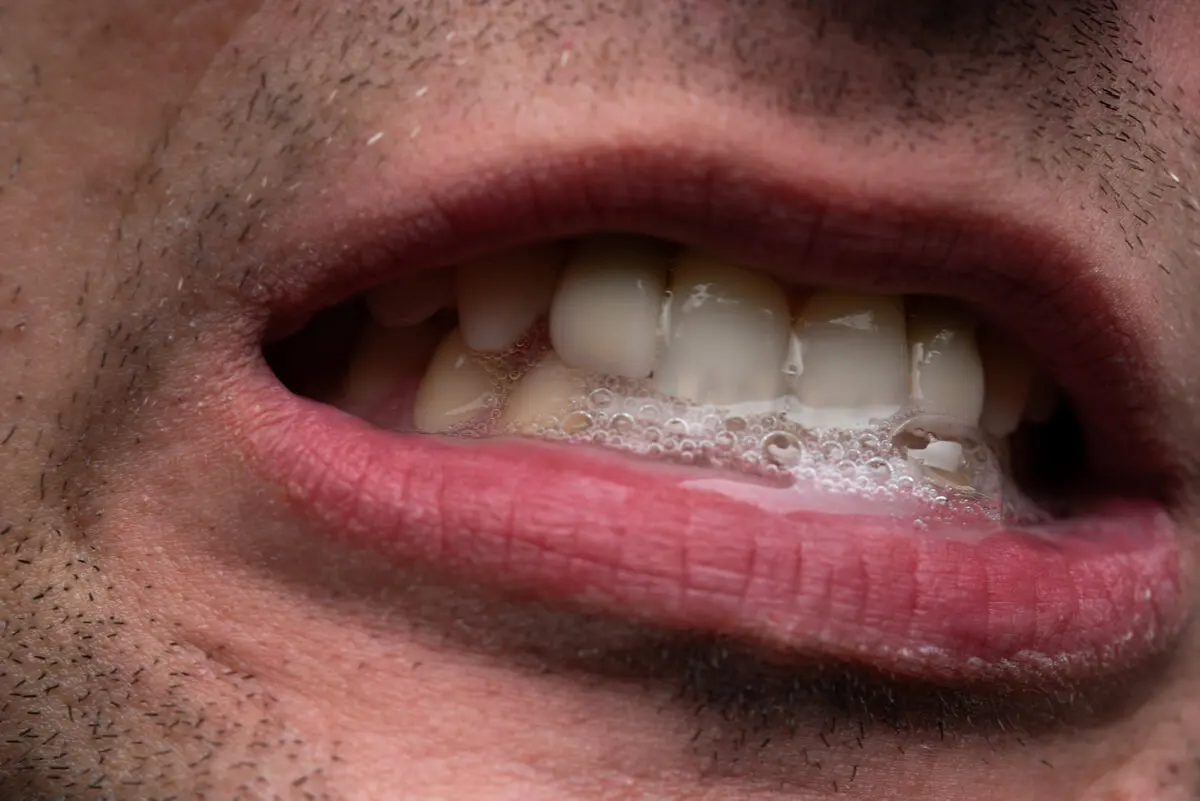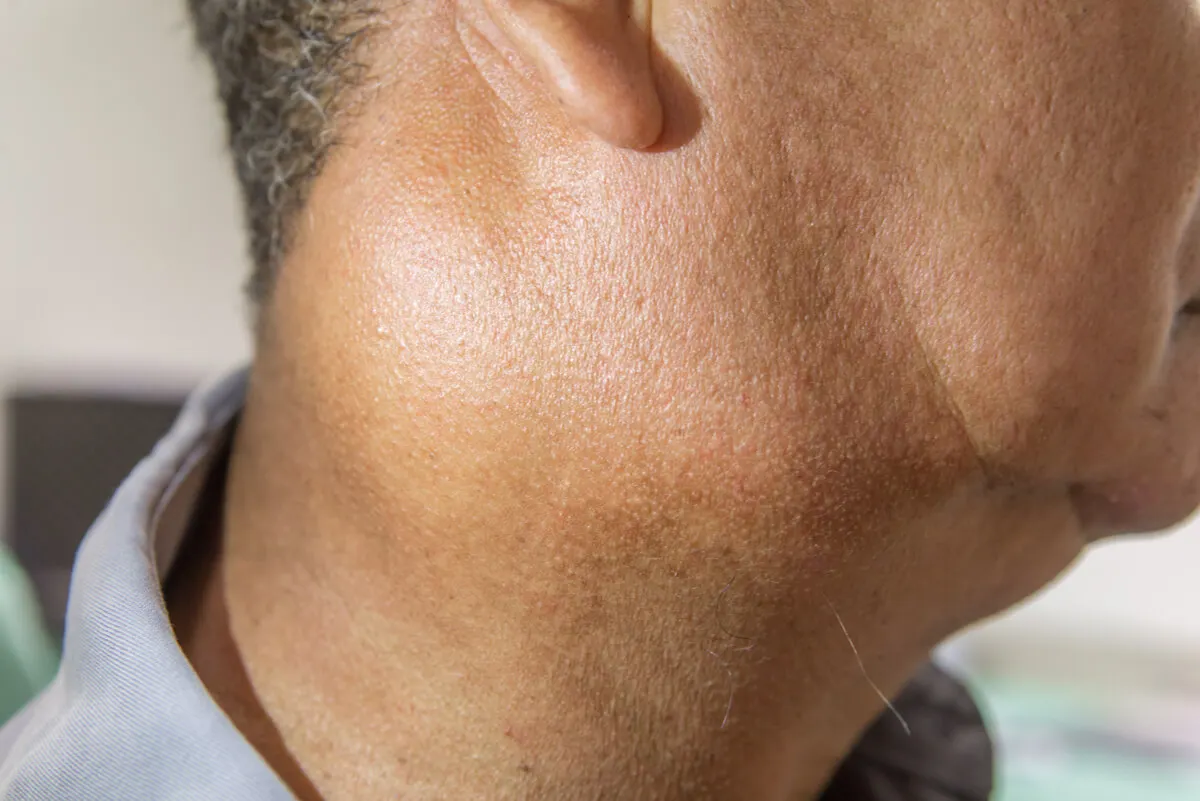Salivary Gland Biopsy: When Is It Performed?


Reviewed and approved by the nurse Leidy Mora Molina
Glands are a group of organs that specialize in the production and secretion of vital substances for the human body. The study of their anatomy and function is useful in the diagnosis of certain diseases. Are you interested in knowing when a salivary gland biopsy is performed? Here we’ll tell you.
The salivary glands are located in the mouth and in the upper part of the digestive tract, and their essential function is the production of saliva for digestion. Studies affirm that, due to their vascularization and anatomy, they are prone to multiple inflammatory and infiltrative conditions, and their dysfunction is an alarm sign to suspect certain disorders.
What is a salivary gland biopsy?
From an anatomical and functional point of view, salivary glands are divided into major and minor or accessory glands. The first group is formed by the parotid gland, located on the masseter muscle; then we have the sublingual, under the tongue, and the submandibular gland, located on the base of the oral cavity.
Salivary gland biopsy consists of the controlled extraction of a small fragment of tissue or the entire gland for subsequent histopathological study. This test can only be performed by trained professionals and is indicated in specific cases.

When to carry out a salivary gland biopsy?
In most cases, a salivary gland biopsy is performed when there is clinical suspicion of a tumor or infiltrative processes in the tissue. Research (in Spanish) affirms that salivary gland tumors account for up to 5% of head and neck tumors, most of which are benign.
In this sense, the gland biopsy makes it possible to determine the type of lesion and, on the basis of this result, to establish the medical course of action to be followed. Similarly, the test is usually recommended when doctors suspect an obstructive process in glandular drainage.
On the other hand, some authors state that salivary gland biopsy is one of the main criteria for the diagnosis of Sjögren’s syndrome. This is a chronic autoimmune disease characterized by a dysfunction in the secretion of saliva and tears by the glands.
You may be interested in: How Doctors Treat Autoimmune Diseases
Preparations for the examination
No special preparations are necessary for performing a salivary gland biopsy using a puncture. However, it’s advisable not to consume food or drink for 6 to 8 hours prior to the test.
In addition, the specialist may indicate temporary cessation of anticoagulants a couple of days before the test if the patient takes this type of medication.
How is the salivary gland biopsy performed?
Glandular biopsy is usually performed in a doctor’s clinic. The technique of choice is fine needle aspiration biopsy. The latter facilitates the extraction of a small salivary gland sample without producing adverse effects.
To take the sample, the area to be approached should first be cleaned and sterilized with isopropyl alcohol. Subsequently, a local anesthetic will be administered to numb and eliminate pain in the area. The patient may feel a small prick and then lose sensibility.
Once the area is prepared, the specialist will introduce the biopsy needle until it reaches the salivary gland to be evaluated. This may cause slight pressure or discomfort for 1 to 2 minutes. A small portion of the glandular tissue will then be aspirated and removed and placed on a slide to be sent to the laboratory.
In the case of salivary gland biopsy for Sjögren’s syndrome, it is likely that further administration of anesthetic will be required and multiple tissue samples from different glands will be taken. In this regard, a few stitches may be placed at the approach site. The area may be tender and reddened for a few days after the procedure.
Discover more: Thick Saliva: Why Does It Happen?
Analysis of the results
The results of this test are reported by a specialized pathology laboratory. Normally, the glandular tissue is intact and free of abnormal growths or evidence of tumor lesions.
However, a salivary gland biopsy can be positive for inflammatory processes, infections, infiltrations and cancer cell proliferation. Similarly, cellular dysfunction and tissue atrophy are indications of Sjögren’s syndrome. Another pathology that can be identified is sarcoidosis.

Risks of salivary gland biopsy
A salivary gland biopsy is a relatively safe procedure with a low rate of adverse effects. Some of the risks associated with this procedure include the following:
- Infection
- Hemorrhage
- Allergy to anesthesia
- Trigeminal or facial nerve injury
- Numbness of the lip or facial skin
In addition, some patients experience mild pain and discomfort on the days following surgery, which can be relieved with over-the-counter pain relievers. On the other hand, medical attention should be sought if the following symptoms occur:
- Fever
- Bleeding
- Swelling and pain that doesn’t subside
- Difficulty breathing and swallowing
- Fluid leaking from the puncture site
Steps to follow after the biopsy
Salivary gland biopsy is a diagnostic procedure to evaluate the anatomy and microscopic function of the glandular tissue. In this way, tumor diseases, and other conditions, such as Sjögren’s syndrome, can be detected.
.Strict medical follow-up after any such procedure is vital.
All cited sources were thoroughly reviewed by our team to ensure their quality, reliability, currency, and validity. The bibliography of this article was considered reliable and of academic or scientific accuracy.
- León JA, Lorenty LW, Martínez FH. Biopsia de glándula salival menor en el diagnóstico confirmatorio del Síndrome de Sjögren y Amiloidosis. Cambios rev. méd. 2018; 17(2):89-94
- Nazar G, Vial G, Ibarra A, Cabezas L. Tumores de cabeza y cuello. Revista Médica Clínica Las Condes. 2007; 18(4): 408-418.
- Parra R, Polo J, Rojas A. Interpretación de la biopsia de glándula salival menor en el síndrome de Sjögren. Correlación clínico-patológica. Revista Colombiana de Reumatología. 2020; 27(52): 82-89.
- Sánchez A, Martínez R. Enfermedades sistémicas que afectan a las glándulas salivares. Seminarios de la Fundación Española de Reumatología. 2010; 11(3): 94-99.
- Santiago M, Seisdedos M, García N, Secco A. Frecuencia de complicaciones y rédito de la biopsia de glándula salival menor. 2012; 8(5): 255-258.
This text is provided for informational purposes only and does not replace consultation with a professional. If in doubt, consult your specialist.








